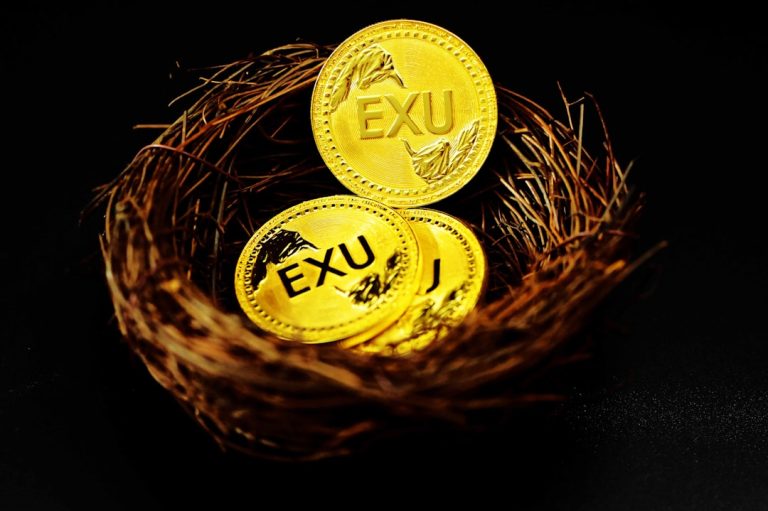The Seed Enterprise Investment Scheme (SEIS)
The SEIS was introduced to stimulate economic growth by encouraging investments in small, early-stage companies. This scheme offers a range of tax reliefs to individual investors, which serve as a significant incentive for investing in high-risk, high-potential start-ups.
Income Tax Relief
One of the most attractive benefits of the SEIS is the opportunity for investors to claim 50% income tax relief on investments. This relief applies to a maximum investment of £100,000 per tax year, which was recently increased to £200,000, effectively halving the cost of investment from a tax perspective. For example, if an investor places £20,000 in a qualifying SEIS company, they can reduce their income tax liability by £10,000.
Capital Gains Tax Relief
The SEIS also offers a capital gains tax (CGT) exemption for any gains on the disposal of shares held for at least three years. This benefit is pivotal, as it incentivises long-term investments, aligning investors’ interests with the sustainable growth of the start-up. Furthermore, if an investor sells an asset and reinvests the gain in SEIS shares, 50% of the gain is exempt from CGT, encouraging the reinvestment of capital gains into the start-up ecosystem.
Loss Relief
Investment in start-ups inherently carries risks. The SEIS acknowledges this by offering loss relief, allowing investors to offset a portion of their loss against their income tax liability. This relief significantly reduces the net investment risk and cushions the financial impact in cases where the invested company fails to thrive.
The Enterprise Investment Scheme (EIS)
While SEIS is tailored towards very early-stage companies, EIS targets larger, slightly more mature start-ups. EIS provides tax reliefs to investors, albeit at different scales and conditions compared to SEIS.
Income Tax Relief
Under EIS, investors can claim 30% income tax relief on investments up to £1 million per tax year, or £2 million if the investment is in ‘knowledge-intensive’ companies. This sizable relief lowers the effective cost of investment, making it an attractive option for those looking to support growing businesses while mitigating their tax liabilities.
Capital Gains Tax Advantages
Similar to SEIS, EIS offers a CGT exemption on gains from the sale of shares held for a minimum of three years. Additionally, EIS allows for the deferral of CGT on gains from other assets if the gain is invested in EIS shares. This deferral is particularly beneficial for investors looking to reallocate their investment portfolio while managing their CGT liability effectively.
Loss Relief
EIS also provides loss relief, allowing investors to offset the loss against their income tax bill, thus reducing the overall risk of the investment. This feature is crucial in balancing the risk-return equation for investors, making investments in higher-risk companies more palatable.
Recent Enhancements to SEIS and EIS
The UK government, recognising the importance of start-ups and early-stage companies to the economy, has recently made several enhancements to these schemes. For SEIS, the government has increased the company lifetime allowance from £150,000 to £250,000 and extended the qualifying trading period from two years to three.
The gross asset limit for eligible companies has also been raised from £200,000 to £350,000. These changes reflect the government’s commitment to fostering a robust start-up ecosystem and make SEIS even more attractive to investors.
Impact on the UK Economy
The tax benefits offered by SEIS and EIS are not just about investor advantages; they play a significant role in the broader economic context. By incentivising investments in start-ups and early-stage businesses, these schemes stimulate innovation, create jobs, and promote overall economic growth. This is particularly pertinent in the current economic climate, where fostering entrepreneurial ventures is crucial for economic resilience and development.
Navigating the Regulatory Landscape
Investing in SEIS and EIS not only offers substantial tax advantages but also requires navigating a complex regulatory landscape. Understanding the intricacies of these schemes is crucial for both investors and the companies seeking investment.
Compliance and Due Diligence
For a company to be eligible for SEIS or EIS, it must meet specific criteria set by HMRC. This includes restrictions on the type of business, the use of funds, and the company’s size and age. Investors must conduct thorough due diligence to ensure that their investment will qualify for the tax reliefs. Moreover, companies must maintain their qualifying status throughout the investment period, which requires careful business planning and compliance with ongoing regulatory requirements.
The Importance of Advance Assurance
Given the complexity of SEIS and EIS regulations, it’s advisable for companies to seek advance assurance from HMRC. This process provides a preliminary indication of whether a company is likely to qualify for SEIS or EIS. For investors, investing in a company that has received advance assurance can provide a greater degree of confidence that their investment will be eligible for tax reliefs.
The Role of SEIS and EIS in Portfolio Diversification
For individual investors, SEIS and EIS offer opportunities to diversify their investment portfolios. By investing in small, high-growth potential companies, investors can access a different risk-return profile compared to traditional equity or fixed-income investments. This diversification can be particularly beneficial in times of market volatility or economic downturns.
Balancing Risk and Reward
While the tax reliefs under SEIS and EIS are designed to mitigate some of the risks inherent in investing in small and early-stage companies, these investments still carry a higher level of risk compared to more established securities. Investors should balance the potential high returns against the increased risk of loss and consider how these investments fit within their overall investment strategy and risk tolerance.
SEIS and EIS investments are not just about financial returns and tax benefits; they can also be a means of supporting sustainable and socially impactful businesses. Investors increasingly seek opportunities that align with their values, and many start-ups and early-stage companies financed through SEIS and EIS are in sectors like renewable energy, health technology, and social enterprise.
Supporting Innovation and Positive Change
By directing capital towards innovative solutions to societal challenges, SEIS and EIS investors can play a role in driving positive change. This approach to investing reflects a broader trend towards responsible and sustainable investment practices, where financial returns are balanced with social and environmental impact.
The Evolving SEIS and EIS Landscape
The investment landscape for SEIS and EIS is continually evolving, with changes in regulations, market conditions, and investment trends. Staying informed about these developments is crucial for both investors and companies seeking to utilise these schemes.
Adapting to Market Trends
As the market evolves, so do the types of companies that are seeking SEIS and EIS funding. Investors should be aware of emerging trends in sectors such as technology, healthcare, and sustainability, which are often at the forefront of SEIS and EIS investments.
The Future of SEIS and EIS
The UK government’s recent enhancements to SEIS and EIS signal a strong commitment to supporting the start-up ecosystem. As the economic landscape changes, particularly in the post-Brexit and post-pandemic context, these schemes are likely to continue playing a vital role in fostering innovation and economic growth.
Strategies for Maximising the Benefits of SEIS and EIS Investments
Investors looking to capitalise on the tax advantages of SEIS and EIS should consider several strategies to maximise the benefits while managing risks.
Diversification within SEIS/EIS Portfolios
Diversification is key in any investment strategy, and it’s particularly crucial when investing in high-risk areas like early-stage companies. Investors should consider spreading their investments across various sectors and companies within the SEIS and EIS frameworks to mitigate risk.
Timing and Long-Term Perspective
Timing plays a crucial role in these investments. Given the three-year holding period for CGT exemption, investors should have a long-term perspective. Additionally, understanding the timing for tax relief claims and aligning this with personal tax planning can optimise the benefits.
Working with Experienced Advisors
Given the complexities of SEIS and EIS, working with experienced financial advisors or investment platforms specialising in these schemes can provide invaluable guidance. These professionals can assist in identifying qualifying companies, ensuring compliance, and structuring investments to maximise tax efficiencies.
Challenges and Considerations for Investors
While SEIS and EIS offer attractive tax incentives, they are not without challenges and considerations that investors need to be aware of.
Liquidity and Exit Strategies
Investments in early-stage companies are typically illiquid. Investors should be prepared for a lack of immediate exit options and have a clear understanding of potential exit strategies, such as trade sales, IPOs, or buybacks.
Keeping Informed and Proactive
Regulatory changes, market dynamics, and company-specific developments can all impact the success of SEIS and EIS investments. Staying informed and proactive in managing these investments is vital for success.
Supporting the UK’s Entrepreneurial Ecosystem
Investing in SEIS and EIS is not just a financial decision; it’s a contribution to the UK’s entrepreneurial ecosystem. By providing capital to innovative start-ups and early-stage companies, investors are supporting job creation, technological advancement, and economic diversification.
The Broader Impact
Beyond individual returns, these investments play a part in driving the UK’s global competitiveness in sectors like technology, clean energy, and healthcare. This broader impact underscores the significance of SEIS and EIS as tools for economic growth and innovation.
Conclusion
The SEIS and EIS schemes present unique opportunities for investors to support emerging businesses while benefiting from significant tax incentives. Understanding these schemes’ nuances, staying informed about regulatory changes, and adopting a strategic approach to investment can help maximise the benefits and contribute to the UK’s vibrant startup landscape. As the investment environment evolves, SEIS and EIS remain pivotal in bridging the gap between investors seeking tax-efficient opportunities and innovative companies needing essential funding.



